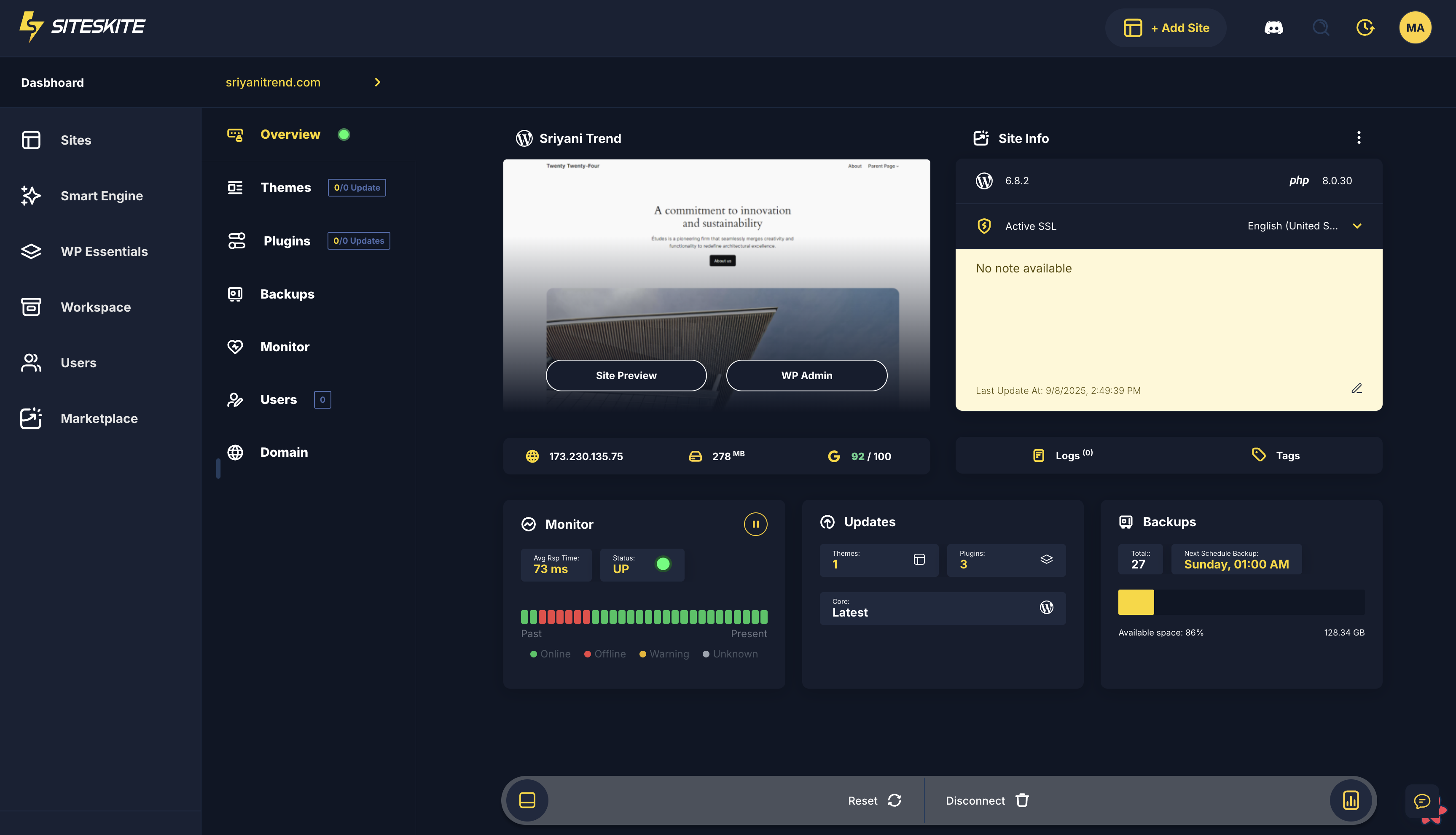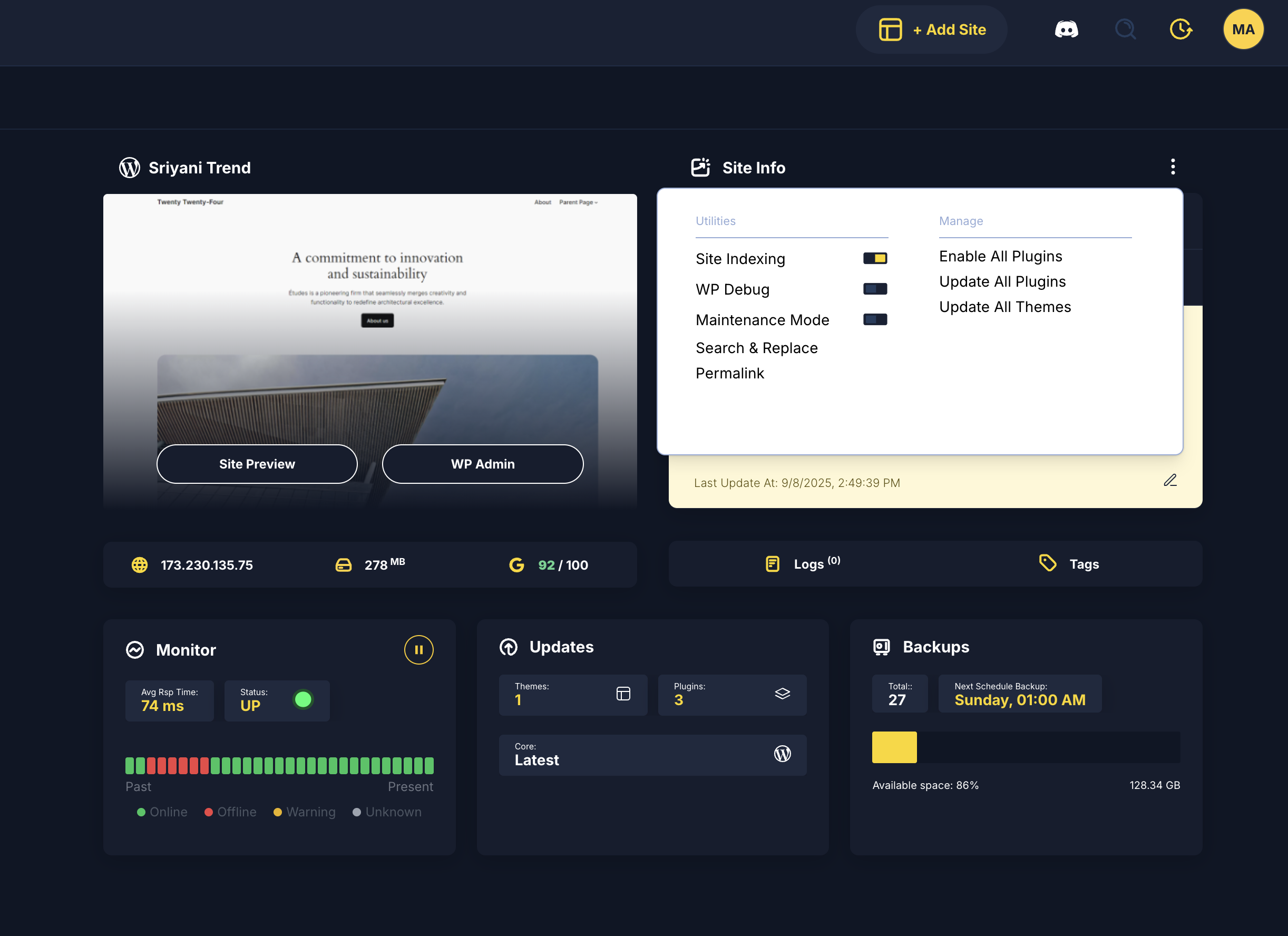SiteSkite WP CANVAS is the control hub for each linked WordPress site — a compact, action-first panel that lets you inspect, troubleshoot, update and manage common WP tasks from the SiteSkite portal.
WP CANVAS
Log in to SiteSkite Portal → Sites.
-
Click the site you want to manage.
Features
Site Indexing
Creates a searchable index of the site’s content and key assets (posts, pages, media, URLs). Use it to quickly locate content, run site-wide searches, or verify that recent content is discoverable from the portal.
WP Debug
Toggle WordPress debugging remotely (WP_DEBUG). When enabled, CANVAS shows debug output/logs so developers can trace PHP warnings/notices and find issues without asking for server access. Always disable debug on production when finished.
Maintenance Mode
Put the site into a user-facing maintenance page while you perform updates or fixes. You can enable/disable maintenance mode from CANVAS and optionally show a custom message to visitors.
Search & Replace
Run controlled, site-wide text or URL replacements (for example,
http://→https://, or an old domain → new domain). Warning: This is powerful and can be destructive — always backup before running and preview matches if available.Permalink Manage
View and update the site’s permalink structure, and flush rewrite rules. Useful after migrating content, changing slugs, or resolving 404s related to permalink settings.
Enable All Plugins
Temporarily enable (or bulk-enable) all plugins on the site — useful for diagnosing plugin-dependent features or for quickly reactivating after maintenance. Use cautiously (conflicts can trigger errors).
Update All Plugins
Run updates for all installed plugins from the CANVAS panel. Shows progress and results. Best practice: take a backup and/or enable maintenance mode before bulk-updating.
Update All Themes
Run updates for all installed themes (including the active theme). Like plugin updates, perform with a backup in place and preferably during low-traffic windows.
WP Language
View or change the WordPress site language (locale) remotely. Handy for multilingual setups or when fixing localization issues.
Error Console
A consolidated view for recent PHP/JS errors, notices, and logged issues the site reported. Use this to triage what’s causing failures before jumping into fixes.
Notes
Add internal, non-public notes tied to the site (for example: “Client requested plugin X removed” or “Staging updated on 2025-09-07”). Notes are visible to your team/account users and help keep site-specific context in one place.
Tags
Apply tags to the site for organization and filtering (e.g.,
client-a,ecommerce,priority). Tags are searchable in the portal and help teams manage many sites efficiently.One-Click Login
A secure, token-based one-click way to enter the site’s WordPress admin without credentials. Great for quick access — requires the SiteSkite plugin to be active on the site.
Reset Site
A powerful admin action to reset site settings/content to a defined baseline (depends on your reset configuration). Warning — destructive: this can remove site data or revert settings. Always require backups and restrict this action to administrators only.
Always backup before running Reset Site, Search & Replace, or bulk Update All actions.
Use Maintenance Mode during major updates to prevent user disruptions.
Restrict high-risk actions (Reset, bulk updates, Search & Replace) to Administrator role only.
Prefer testing updates on a staging copy first.
Keep a clear audit trail: use Notes to log what was changed and why.

